 Murder at King’s Crossing (Wrexford & Sloane, #8) by Andrea Penrose
Murder at King’s Crossing (Wrexford & Sloane, #8) by Andrea Penrose Format: eARC
Source: supplied by publisher via Edelweiss
Formats available: hardcover, large print, ebook, audiobook
Genres: historical fiction, historical mystery
Series: Wrexford & Sloane #8
Pages: 368
Published by Kensington on September 24, 2024
Purchasing Info: Author's Website, Publisher's Website, Amazon, Barnes & Noble, Kobo, Bookshop.org, Better World Books
Goodreads
For fans of Miss Scarlet and the Duke and Bridgerton—a masterfully plotted mystery that combines engaging protagonists with rich historical detail and “an unusually rich look at Regency life,” (Publishers Weekly), plus a touch of romance that readers of Amanda Quick and Deanna Raybourn will savor.
Celebration is in the air at Wrexford and Charlotte’s country estate as they host the nuptials of their friends, Christopher Sheffield and Lady Cordelia Mansfield. But on the afternoon of the wedding, the festivities are interrupted when the local authorities arrive with news that a murdered man has been discovered at the bridge over King’s Crossing, his only identification an invitation to the wedding. Lady Cordelia is horrified when the victim is identified as Jasper Milton, her childhood friend and a brilliant engineer who is rumored to have discovered a revolutionary technological innovation in bridge design. That he had the invitation meant for her cousin Oliver, who never showed up for the wedding, stirs a number of unsettling questions.
Both men were involved in the Revolutions-Per-Minute Society, a scientific group dedicated to making radical improvements in the speed and cost of transportation throughout Britain. Is someone plotting to steal Milton’s designs? And why has her cousin disappeared?
Wrexford and Charlotte were looking forward to spending a peaceful interlude in the country, but when Lady Cordelia resolves to solve the mystery, they offer their help, along with that of the Weasels and their unconventional inner circle of friends. The investigation turns tangled and soon all of them are caught up in a treacherous web of greed, ambition, and dangerous secrets. And when the trail takes a shocking turn, Wrexford and Charlotte must decide what risks they are willing to take with their family to bring the villains to justice . . .
My Review:
 The difference between “I’ve got a bridge to sell you” and “I’ve got revolutionary plans for building bridges to sell you” should be the width of a chasm – but it’s not nearly as far as one would expect in this latest entry in the Wrexford & Sloane Regency mystery series, after last year’s Murder at the Merton Library and the previous year’s Murder at the Serpentine Bridge.
The difference between “I’ve got a bridge to sell you” and “I’ve got revolutionary plans for building bridges to sell you” should be the width of a chasm – but it’s not nearly as far as one would expect in this latest entry in the Wrexford & Sloane Regency mystery series, after last year’s Murder at the Merton Library and the previous year’s Murder at the Serpentine Bridge.
There we go, bridges again! This one is pretty much bridges and bodies all the way down – with the occasional added Bonaparte. Not that Bonaparte is personally on the scene, but rather that this story takes place towards the end of his first brief exile. (Wrexford and company do not, as this story takes place, know precisely when that exile will end, but the handwriting was most definitely on the wall.)
The story begins when tragedy strikes in the midst of celebration. Wrexford and Sloane’s best friends, ‘Kit’ Sheffield and Lady Cordelia, finally tie their own marital knot at Wrex’s country estate. The celebration is intended to be small, close friends and family only, but one guest – or perhaps two guests – are missing, depending on how one counts. One is Lady Cordelia’s cousin Oliver Carrick and the other, Jasper Milton, is one of the dear friends who helped her sneak into mathematics lectures at Cambridge in male disguise.
Her happiness is dimmed when her friend’s body is found with her cousin’s wedding invitation as his only identification, putting her missing cousin in the frame for the murder.
And that’s where the bridges come in and cross the entire case. Her friend Milton had been hinting about a revolutionary new design that would allow bridges to be built in areas where it had been formerly considered impossible. If true and practical – and most likely yes to both because Milton truly was a genius – it would allow the new railroads to reach smaller and more remote towns. In turn, this would allow working class people to move to where their labor was needed instead of being stuck where they were born – and practically trapped.
There’s a lot of money to be made with Milton’s last designs – if they can be found. There’s also the potential for a lot of radical upheaval if those designs come to fruition – both at home and abroad.
Milton’s friends seem to be doing their damndest to place the frame for his murder around Cordelia’s cousin Oliver. At least until they start dropping like flies in their turn, at times and places where Oliver has an ironclad alibi. And yet, as far as Wrexford is concerned – and in spite of Cordelia’s hopes and fears – Oliver’s behavior makes him look guilty as sin.
There are too many in pursuit of those plans, muddying the waters and adding to the body count. Time is running out for Wrexford and Sloane to figure out who really ‘done’ it before the noose closes around the wrong neck. Or necks. Or their own.
 Escape Rating B: It took the longest time for this particular entry in the series to grab me. Once it finally did, I was hooked again, but it took longer than usual. It was probably a combination of not being quite the right book at the right time, the domesticity of the early scenes (which I love but not quite so thoroughly front-loaded) AND the fact that the characters were flailing around to get even a glimpse of a direction for a bit longer than is usual for this generally über-competent crew.
Escape Rating B: It took the longest time for this particular entry in the series to grab me. Once it finally did, I was hooked again, but it took longer than usual. It was probably a combination of not being quite the right book at the right time, the domesticity of the early scenes (which I love but not quite so thoroughly front-loaded) AND the fact that the characters were flailing around to get even a glimpse of a direction for a bit longer than is usual for this generally über-competent crew.
Not that they were not trying – just that someone in the mix was deliberately obfuscating the situation and the clues were thin on the ground to begin with – in part because of the aforementioned malign, obfuscatory influence.
So this particular entry in the series had a LOT of plot threads going on, threw out a barrel of red herrings, and it took a fair bit of the book for those herrings to get re-gathered into the proper nets. Howsomever, as much as the process of getting there drove me a bit batty, the actual solution was priceless in the manner of those old MasterCard commercials.
Where this story was lovely was in the way that the relationships among the members of this extended found family continued to grow and deepen. Not just that Kit and Cordelia finally tied the knot, but also that the Weasels are both growing in number and growing up, which should provide plenty of family drama for future entries in the series.
Which I’m very pleased to say will be at least three more as the author has announced on her blog that she’s recently been contracted to continue the series with three more adventures. So I have hope that this time next year Wrexford & Sloane will be back!

 Murder at the Merton Library (Wrexford & Sloane, #7) by
Murder at the Merton Library (Wrexford & Sloane, #7) by 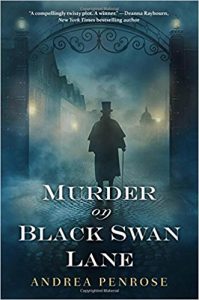 Escape Rating A-: I discovered this series last summer – another time when I was hunting for a good mystery series – and it has been an absolute delight every single time I’ve picked the series back up. But I held onto this entry because I’ve learned that no matter how great a series is – and this absolutely is – it just isn’t a good idea to read the series books too closely together no matter how much I’m tempted.
Escape Rating A-: I discovered this series last summer – another time when I was hunting for a good mystery series – and it has been an absolute delight every single time I’ve picked the series back up. But I held onto this entry because I’ve learned that no matter how great a series is – and this absolutely is – it just isn’t a good idea to read the series books too closely together no matter how much I’m tempted.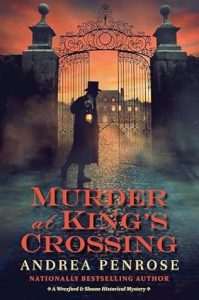 And on my third hand, one of the people caught up in this farrago clearly wasn’t onboard with all the deviltry involved, and could have had made much different choices, and we are confused by and feel for that character almost as much as Charlotte does.
And on my third hand, one of the people caught up in this farrago clearly wasn’t onboard with all the deviltry involved, and could have had made much different choices, and we are confused by and feel for that character almost as much as Charlotte does.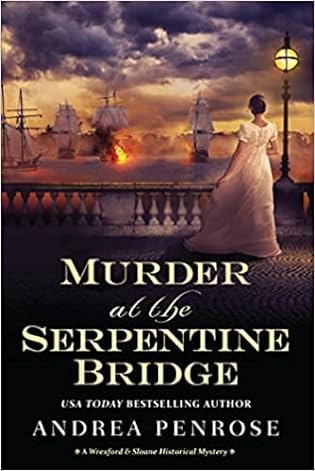 Murder at the Serpentine Bridge (Wrexford & Sloane, #6) by
Murder at the Serpentine Bridge (Wrexford & Sloane, #6) by  As the previous book in this series,
As the previous book in this series,  Murder at the Royal Botanic Gardens (Wrexford & Sloane, #5) by
Murder at the Royal Botanic Gardens (Wrexford & Sloane, #5) by 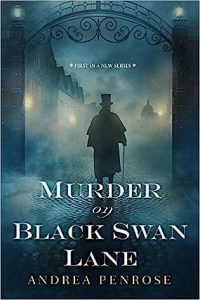 This fifth book in the
This fifth book in the 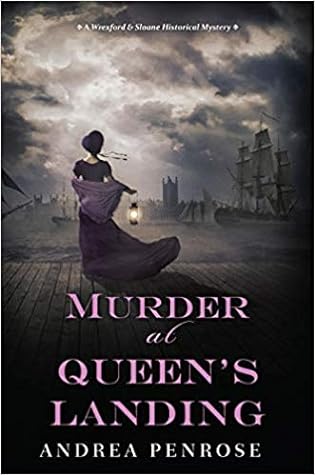 Murder at Queen's Landing (A Wrexford & Sloane Mystery, #4) by
Murder at Queen's Landing (A Wrexford & Sloane Mystery, #4) by 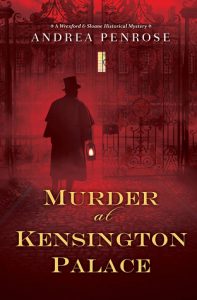 Escape Rating A: You wouldn’t think that it would be possible to make what is ultimately a financial crime be all that fascinating, but the machinations of arbitrage that turn out to be the center of this criminal conspiracy are both easy enough to follow and absolutely deadly in their application.
Escape Rating A: You wouldn’t think that it would be possible to make what is ultimately a financial crime be all that fascinating, but the machinations of arbitrage that turn out to be the center of this criminal conspiracy are both easy enough to follow and absolutely deadly in their application.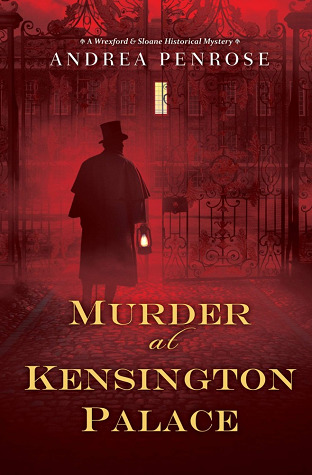 Murder at Kensington Palace (Wrexford & Sloane, #3) by
Murder at Kensington Palace (Wrexford & Sloane, #3) by 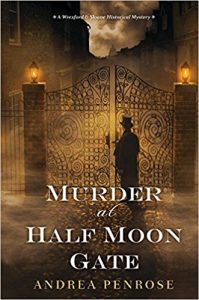 The murder that drags Wrexford and Sloane back into the fray after the events of
The murder that drags Wrexford and Sloane back into the fray after the events of 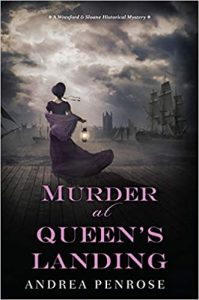 Because this case was steeped in those scientific questions, as well as the age-old question about the fine lines between genius and madness, and between interest and obsession. All the red herrings in this one, and there were many, had been electrocuted or charred to a crisp before presentation, making the solution seem just that much farther out of reach.
Because this case was steeped in those scientific questions, as well as the age-old question about the fine lines between genius and madness, and between interest and obsession. All the red herrings in this one, and there were many, had been electrocuted or charred to a crisp before presentation, making the solution seem just that much farther out of reach.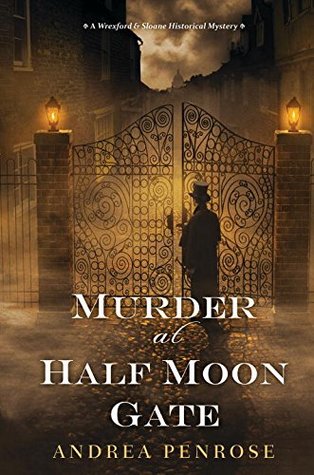 Murder at Half Moon Gate (A Wrexford & Sloane Mystery) by
Murder at Half Moon Gate (A Wrexford & Sloane Mystery) by 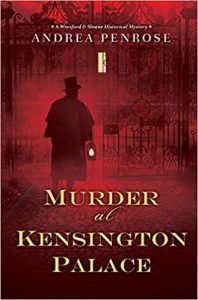 At the same time, this series has also brought other historical mysteries to mind, especially
At the same time, this series has also brought other historical mysteries to mind, especially 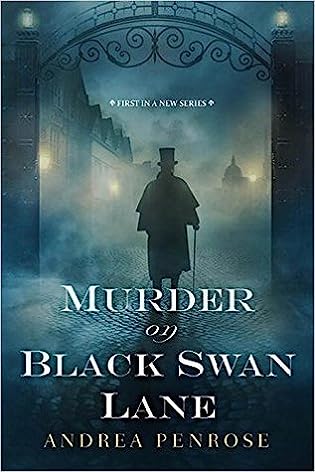 Murder on Black Swan Lane (Wrexford & Sloane, #1) by
Murder on Black Swan Lane (Wrexford & Sloane, #1) by